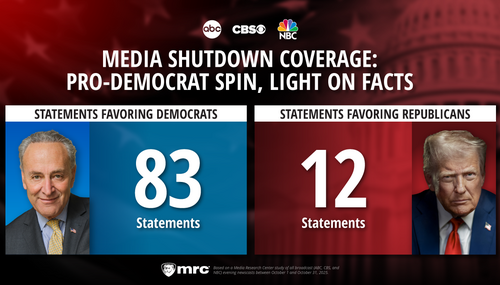Several major media players, including print icons, are losing money. An April 20 article in the New York Times reported that the New York Times Company (NYT and the Boston Globe) and the Gannett Company (USA Today) declined in first-quarter revenue while the Tribune Company (the Chicago Tribune and the LA Times) actually lost money.
The Times has recently been rocked by major scandals such as Jayson Blair’s plagiarism and fabrication and Rick Bragg's plagiarism. Newsbusters and Times Watch have documented the Times’ leftward-tilting reporting and an inability to acknowledge reporting mistakes in stories like the Duke lacrosse hoax, the story about rape in the military that was printed when known to be false and the recent article which wrongly claimed an El Salvadoran woman was jailed for an illegal abortion. Radar Online noticed the lowering of journalistic bar at the paper and ranked their ten worst reporters. It’s no secret that the print media are in dire straits, and even the NYT wrote that the “disappointing results underscored the increasingly tough economic times faced by the industry as advertisers continued to shift their focus away from print to the Internet.” The Times gave the numbers for the downturn:
The New York Times Company reported a 26 percent decline in its first-quarter profit. Earnings were $23.9 million, compared with $32.4 million last year. Stripping out special items like staff reduction costs, an accelerated depreciation charge and a tax adjustment, the company’s earnings of 25 cents a share were the same as a year ago.
Within the Times Company’s news media group, which includes The New York Times and The Boston Globe, overall advertising revenue decreased by 4.3 percent. Advertising revenue at The New York Times Media Group declined 3.5 percent, and it was down 4.2 percent at The New England Media Group.
The Times Company can’t even get the Internet to work for them:
While newspaper companies have been eager to highlight how fast their Internet advertising is growing, the Times Company decided to reduce its 2007 guidance for Internet revenue growth, suggesting that the transition from a print advertising model may be a long time coming.
Here comes the understatement of the century:
“Clearly this is not going to be a bang-up year for the newspaper business,” said John Morton, an independent newspaper analyst. “There is stiff competition for Internet advertising, and the transition will take longer and may well be less profitable than was anticipated.”
The financial situation at the NYT Company is looking so questionable, in March, Standard & Poor rated the paper’s senior unsecured debt “‘BBB-plus,’ the third lowest investment grade rating.” Last month, TimesWatch.com had some serious words about the company’s future, saying it "shows no signs of increasing prosperity, only decline.”
Although is not meeting its 2007 Internet revenue forecast of 30 percent, it did rise 22 percent to comprise ten percent of the company’s total revenue. Janet Robinson, chief executive of the Times Company, who describes the advertising environment as “difficult.”
The Times wasn’t alone in advertising difficulties. At the same time that The Tribune Company is up for sale, its real estate ads were down 15 percent and their classified ads were down 14 percent. The publishers of the LA Times and the Chicago Tribune also reported a loss of $15.6 million after paying non-operating charges.
Gannett fared worse, and reported not just a first-quarter decline in revenue but an actual loss:
Gannett, which publishes USA Today, reported a 10.5 percent decline in its first-quarter profit, as income fell from $235.3 million to $210.6 million. Earnings declined to 90 cents a share, from 99 cents.
There is some good reporting in the media, but there is an awful lot of leftward-tilting cheerleading and bias. Maybe a little more hard news and facts and less editorializing disguised as reporting and readers will stop cancelling their subscriptions and turning to online sources.




